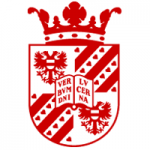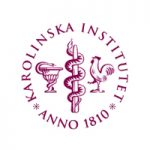项目介绍
The curriculum is organized to allow each of our graduates to achieve the eleven educational objectives noted in the Mission and Medical Education Program Objectives for the Johns Hopkins University School of Medicine. The regular M.D. curriculum comprises four academic years designated First through Fourth Years. The academic requirements of this program can be combined with graduate study leading to a Master’s or Ph.D. degree.
The Genes to Society curriculum is highly integrated both vertically and horizontally across the four years. Elective time is available beginning in Quarter 4 of the Second Year. Elective courses are described in the programs of the various departments in the section under Departments and Divisions, Centers, Institutes, and Subjects of Instruction. This information is supplemented by an elective book which is updated annually. Selected students may interrupt the regular curriculum for one or more years in order to pursue special studies.
The study of science basic to the practice of medicine begins in the First Year with four months of Foundations courses, including Foundations of Human Anatomy, Scientific Foundations, Clinical Foundations, and Foundations in Public Health: Epidemiology, Ethics, and the Health Care System. These courses are intended to introduce students to the basic language and concepts of biomedical science, including molecular biology, cell biology, biochemistry, anatomy, and the social and behavioral sciences. During Clinical Foundations, students begin training in the physician-patient medical interview, physical diagnostics, and clinical reasoning. Each student is assigned a college advisor (see Student Advising, page 77) upon entry to medical school, who serves as the instructor in Clinical Foundations, and academic and career advisor for the remainder of the four years.
Following winter break in First Year, students begin an 18-month organ systems-based course, Genes to Society, which presents genetics, molecular biology, advanced anatomy, physiology, pathology, pathophysiology, and clinical presentations related to each organ system. Dermatology, Immunology, Infectious Disease, Hematology/Oncology, Brain, Mind and Behavior, and Nerve and Special Senses are covered in the First Year. One half-day per week is devoted to a precepted clinical experience, the Longitudinal Ambulatory Clerkship, which provides further training in patient-centered interviewing, physical diagnosis, and health care systems.
Beginning with the first week of medical school and periodically in between courses, 3-day TIME (Topics in Interdisciplinary Medicine) courses will focus students on a multidisciplinary topic related to the social and behavioral sciences. The First Year TIME courses are Disparities and Inequalities in Health Care, Obesity, Nutrition, and Behavior Change, High Value Healthcare, Clinical Informatics, Global Health, Pain Care, and Disaster Medicine. Students will have a variety of lecture and small group discussions supplemented by experiential and skill learning in each course. In the afternoons of these TIME courses students will be attending a Scholarly Concentration course in one of five concentrations: Basic Science Research, Clinical Research, Public and Community Health Service, Ethics and the Art of Medicine, and History of Medicine. Beginning as a seminar series, each student will eventually complete a mentored scholarly project by the end of the Second Year of study.
Second Year students return in late August to complete the Genes to Society course in the following organ systems: Pulmonary, Renal, Cardiovascular, GI/Liver, Endocrine, Reproductive, and Musculoskeletal. The Longitudinal Clerkship continues one-half day per week until the winter break. The TIME courses in the Second Year are Substance Abuse Care, Patient Safety, and End-of-Life and Palliative Care. The Genes to Society course ends in February of the Second Year, and is followed by a 3-week Transitions to the Wards course, which provides intensive training in procedural skills, team communication skills, and clinical reasoning in preparation for the hospital-based clerkships that follow.
In the final quarter of the Second year, students begin the core clinical clerkships. These are 8-week rotations in the clinical disciplines of Medicine, Surgery, Pediatrics, Women’s Health, 4-week rotations in Neurology and Psychiatry, and a 4.5-week rotation in Emergency Medicine. A week of Translational Medicine is required after each 8-week clerkship; during these weeks, students will return to a discussion of state of the art biomedical investigation. Students may elect to delay one 8-week rotation in the next 5 quarters, but must complete this required core of rotations by the end of the first quarter in Year 4. Two one-month advanced clinical rotations are required prior to graduation: a Subinternship and either the Advanced Critical Care Clerkship or the Advanced Adult Ambulatory Clerkship.
The clinical clerkships are devoted to the study of health and disease in the various clinical departments of the School of Medicine, The Johns Hopkins Hospital, Johns Hopkins Bayview Medical Center, Howard County General Hospital, Johns Hopkins All Children’s Hospital, Sinai Hospital of Baltimore, Anne Arundel Medical Center, St. Agnes Hospital, and other affiliated hospitals. Students are introduced to practical clinical problems through instruction and participation in a health care team. Elective courses available in every department range from direct participation in current biomedical research to advanced clinical work. Many clerkships and elective courses may be taken during the summer.
In addition to the advanced clinical clerkships noted above, students are required to complete a 2-week course in the Fourth Year designed to refresh clinical skills and prepare them for internship. This course, Transition to Residency and Internship and Preparation for Life (TRIPLE), is offered twice in the spring of the Fourth Year, and includes simulation-based training, advanced cardiac life support, and advanced communication skills.
The academic year for first year students begins in August and ends in mid-June. There is a winter break in December and a spring break in March.
Between the First and Second Years, there is a summer vacation of eight to nine weeks when students may engage in research or other studies. Students must arrange their schedules to include, between the start of the fourth quarter of the Second Year and graduation in May of the Fourth Year, 7 quarters and 2 weeks of required clinical clerkships and 24.5 weeks of elective work; two additional vacation periods may also be scheduled. At the student’s discretion, vacation quarters may be used for research, board preparation, or additional elective study. Graduating students cannot schedule required clerkships during the fourth quarter of the Fourth Year, unless approved by the Associate Dean for Student Affairs.
The total number of students in each class of the regular four year program is 120.
联系方式
电话: 410-516-8000相关项目推荐
KD博士实时收录全球顶尖院校的博士项目,总有一个项目等着你!






